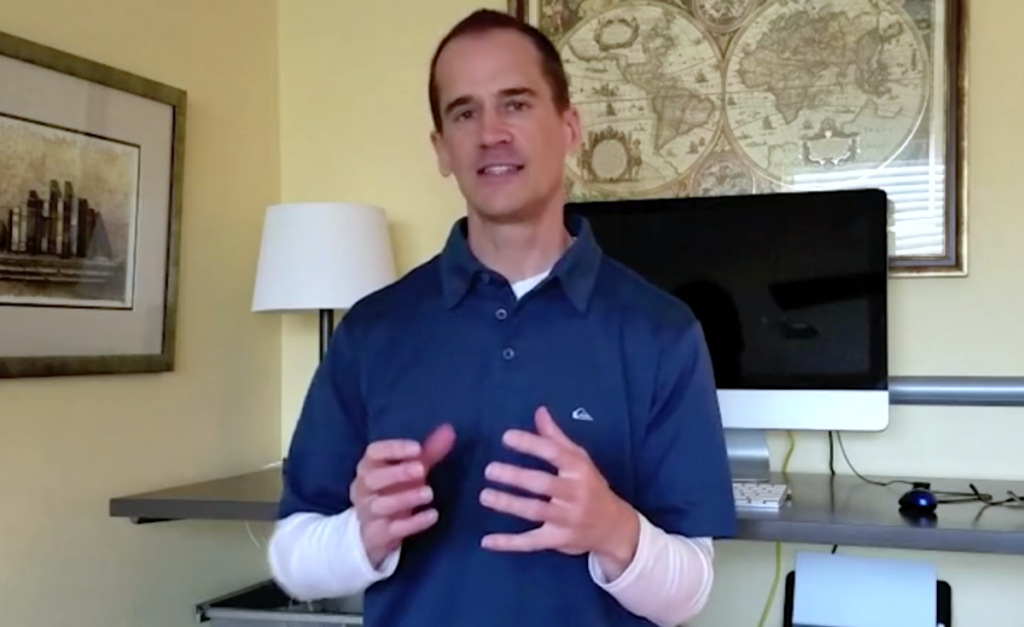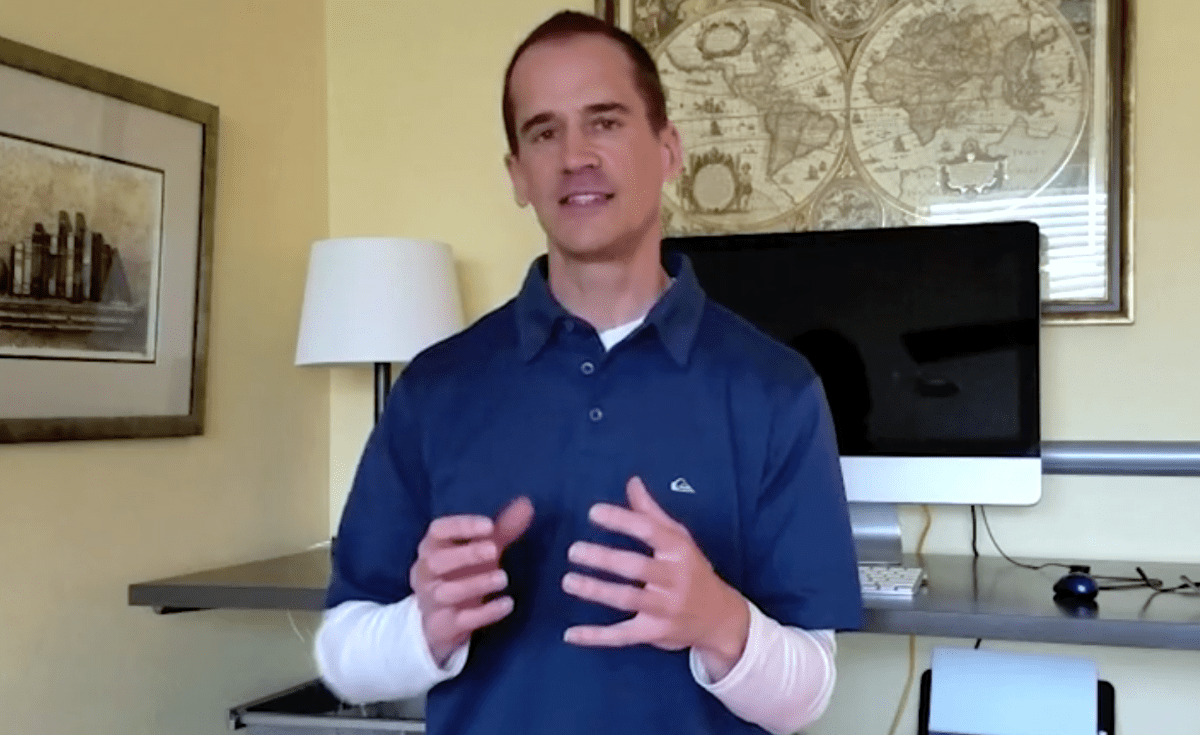You’ve had that type of day, right? Everything seems to be going wrong. You’re almost out of patience, and your students continue to misbehave. You feel like you are losing control, and you only become more anxious. It seems like you’re constantly putting out fires and spending your entire day wondering what is coming next. By the time the final bell rings you are exhausted. You go home asking yourself, “What did I do wrong?”, or even worse, “Why don’t my students like me?”
But here’s the truth: You need to stop caring if your students misbehave.
Your mindset needs to shift–the responsibility for the misbehavior should be 100% on the student. I had the chance to talk to Michael Linsin, author of The Happy Teacher Habits and Classroom Management for Art, Music, and PE Teachers, and he shared with me this idea of how we should look at misbehavior.

If we are able to lay out clear and enforceable expectations–and consistently follow through with consequences–we don’t need to be burdened by the behavior. Students will come to realize that they are responsible for the choices they make.
It’s a definite departure from how a lot of teachers look at the idea classroom management, but I think it’s an important departure. I was also able to ask Linsin about some of his most important advice for art teachers who struggle with student behavior, and I’ve shared some of his best ideas below. If you love these ideas and want hear even more from Linsin, make sure you register for the 2017 Art Ed Now Winter Online Conference, where he is returning as one of the featured presenters! He will be talking about incredibly important classroom strategies during his presentation, titled “How to Regain Control of Any Class.” You can read more about his presentation here.

Here are a few of Linsin’s best tips.
Keep Calm, Cool, and Collected
“Your own personality has a dramatic effect on students–that alone, if you do nothing else but remain calm, can be so important,” Linsin said. “Students feel that, feed off of that, and tend to behave and react as the leader does. They look to you as a teacher to lead the way.”
So it stands that the calmer you are, the better behaved your students will be. If you are more stressed, you will have more excitable students. Just knowing that fact can go a long way toward remaining calm throughout the day. If you don’t have that personality naturally, though–what then? Can you teach yourself to stay calm?
Linsin shared his favorite strategy with me: “One technique that is effective is to, before school begins every day, make a decision. Make a decision that no matter what happens, you will keep your cool. It’s amazing how effectively it works. When students misbehave, you become calmer, not the other way around. If you continue day after day, it becomes part of who you are.”
Teach Your Routines–As Many Times As You Need
You can’t be afraid to reteach–over and over and over if need be. Again, stay calm, and simply go back to where you were before. Have kids practice the correct behavior–whatever it may be–until they are able to do it correctly and consistently. “Reteach your plan, your procedure, or whatever you need,” Linsin said. “Start over immediately before you lose control. Stop everything, rewind to the previous transition, and make sure they can get it right.”
For example your first routine, and perhaps the most important, is entering the classroom. Whether you are teaching this routine at the beginning of the year or re-teaching it in February when the behavior is bad, you still need to model your expectations of what that looks like. Define everything. How should they enter? Can they talk when they come in? When they sit down? Decide what is and isn’t okay and teach it. If you need to teach it every single day until they get it right, so be it. Behaviors need to be in order before learning can happen.
This idea also goes back to why you shouldn’t care if your students misbehave, according to Linsin: “You’re just the referee–you can enforce the rules without getting emotional. If you’ve taught your students well, then they know the rules, and they know you’re just following through. They take the accountability and responsibility because they are left to know there’s no one to blame but themselves.”
Focus on the Small Stuff
If you enforce the rules and consequences on all of the little things, chances are, the big things aren’t going to happen. When you have an effective plan, your students have an understanding and agreement on how to do things. You need to work to create that classroom climate that is welcoming and engaging. If your classroom is an environment kids enjoy, the worst behaviors aren’t going to happen.
But what if things do get out of control? What happens if a student is in your face and yelling?
Linsin had some very specific advice for this situation: “If you engage with a student, you need to just follow your plan. Lay everything out, tell them ‘this is how the classroom works. We do this to protect your right to enjoyment and learning.’”
But what if the situation continues to escalate?
“If that’s the case, then you as the teacher have escalated it somehow–it shouldn’t get to that point,” he told me. “But when [your plan] doesn’t work, we need to de-escalate. Leave that student alone. Tell them ‘It’s okay, I understand, we’ll take care of it.’ Don’t force them to do anything. Don’t threaten, don’t discuss consequences. Move on. Deal with the situation later. Enforce the consequence later, when they are back to normal.”
Refuse to Accept Anything Less than a Peaceful Classroom
“Teaching is supposed to be fun–it really is!” Linsin told me, after our discussion on students’ worst behaviors. So we took some of his best advice, and shifted our mindset; we began to discuss how to create that peaceful classroom.
One of our main goals as teachers is to develop a classroom that has a fun, enjoyable feel to it. We need to create a welcoming environment where students want to be. Think about your ideal classroom. What does it look like? Decide on your vision for a peaceful classroom, and take the steps you need to work toward that ideal.
“The environment you create and your own mindset both have a huge impact on how much you enjoy being a teacher,” Linsin said. “Those are the most important parts of enjoying teaching and enjoying your students. And most importantly? That’s just effective teaching.”
What would your ideal classroom look like?
What is your best piece of classroom management advice?
Magazine articles and podcasts are opinions of professional education contributors and do not necessarily represent the position of the Art of Education University (AOEU) or its academic offerings. Contributors use terms in the way they are most often talked about in the scope of their educational experiences.





